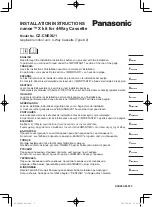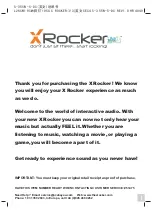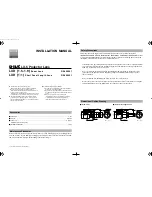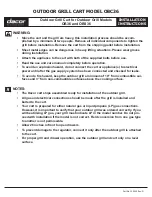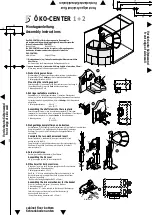
24
www.xsens.com
4.2
Sensors data outputs
Calibrated data has been going through Strapdown Integration and Inverse Strapdown
Integration.
4.2.1
Calibrated delta_q and delta_v
This output is coning- and sculling compensated strap down integrated data in the sensor
coordinate system (
S
). Delta_q and Delta_v values represent the orientation change and
velocity change during a certain interval. For Xsens DOT, this interval is 16.67 ms (60 Hz)
by default.
Table 8: Delta_q and Delta_v outputs
Data
Unit
dq
(-) quaternion values
dv
m/s
dq can also be noted as delta_q, delta_angle, del_q or OriInc. dv can also be noted as
Delta_v, delta_velocity, del_v or VelInc.
It is possible to multiply consecutive dq values to find the total orientation change over a
specific period. Note that this data is not drift free, as it has not been processed by the
sensor fusion filters. Use the orientation output for drift free orientation.
Calibrated acceleration can be obtained from the following formula, where dt=1/output
rate (in the standard scenario in which the output rate is 60Hz, then dt = 1/60 = 16.667ms)
𝐶𝑎𝑙𝑖𝑏𝑟𝑎𝑡𝑒𝑑 𝑎𝑐𝑐𝑒𝑙𝑒𝑟𝑎𝑡𝑖𝑜𝑛 =
𝑑𝑣
𝑑𝑡
Functions are available as part of SDK to convert dq and dv to quantities of angular velocity
(deg/s) and acceleration (m/s2). Refer to SDK programming guide and documentations for
more information.
4.2.2
Calibrated inertial data and magnetic field data
Output of calibrated 3D linear acceleration, 3D rate of turn (gyro) and 3D magnetic field
data is in sensor coordinate system (
S
).
The units of these data output are as follows:
Table 9: Inertial and magnetometer data outputs
Data
Unit
Acceleration
m/s
2
Angular velocity
degree/s
Magnetic field
a.u. (arbitrary units)
6
normalized to earth field
strength
6
one a.u. is the magnetic field strength during calibration at Xsens’ calibration lab
, approximately
40 uT.
























